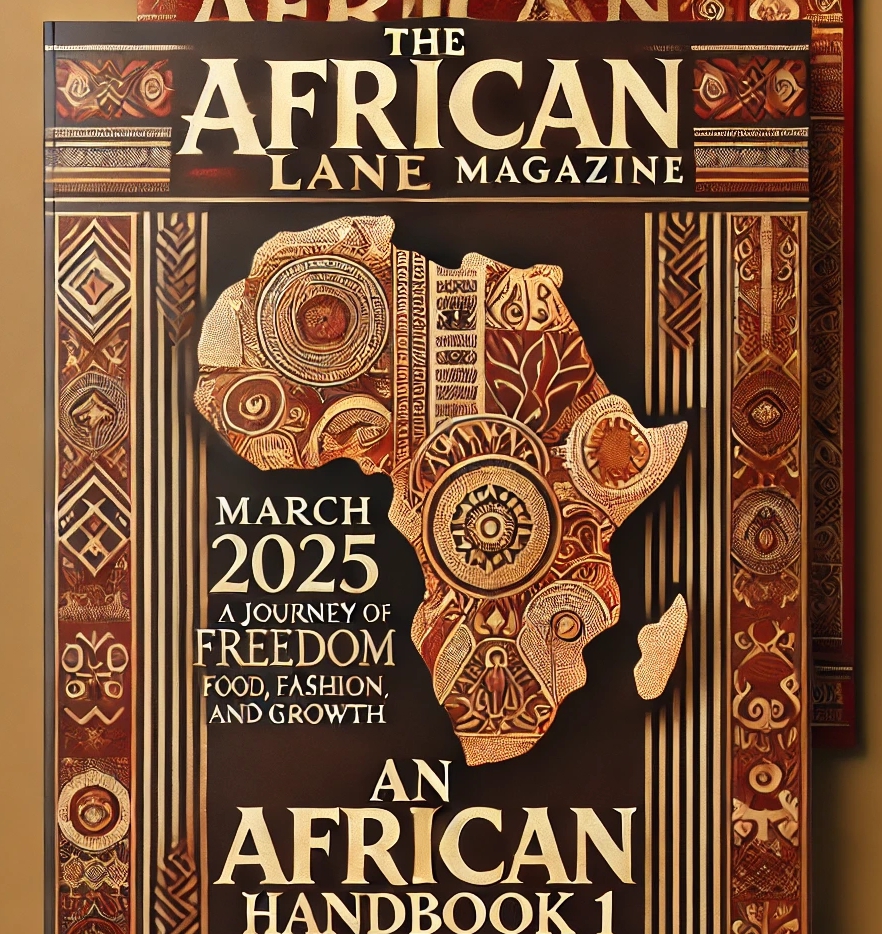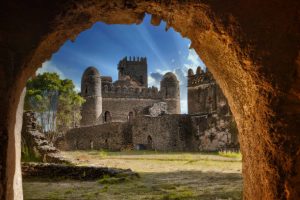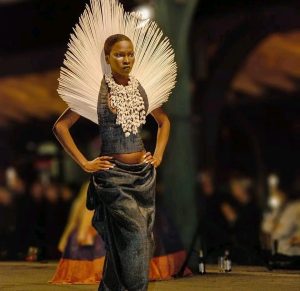TUNISIA Culture, History and Cities
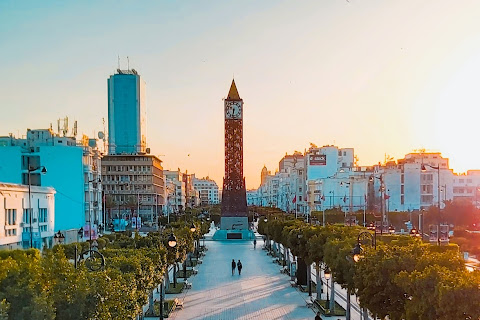
Tunisia officially the Republic of Tunisia is a northernmost country in Africa. It is a part of the maghreb region of north Africa bordered by Algeria to the west and southwest, Libya to the southeast and the mediterranean sea by the north and east. It features the archaeological sites of carthage dating back to the 9th century BC as well as great mosque of Kairouan.
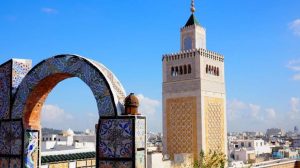
(Image credit: fivepointsix/Getty Images)
The country is known for its great architecture, its golden beaches, sunny weather, and unique blend of Arab and Berber cultures and influence.
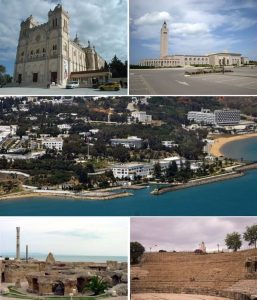
Carthage was the capital city of ancient Carthage, on the eastern side of the Lake of Tunis in what is now Tunisia. Carthage was one of the most important trading hubs of the Ancient Mediterranean and one of the most affluent cities of the classical world.
Country Profile
Independence
20th March 1956
Capital and largest city
Tunis 36°49’N10°11’E
Official language
Arabic
National language
Tunisian Arabic
Religion
99% Sunni Islam
1% Christian, Jew, Baha’is Shia Islam
Ethnic groups
98% Arabic
1% Jews, 1% Berbers
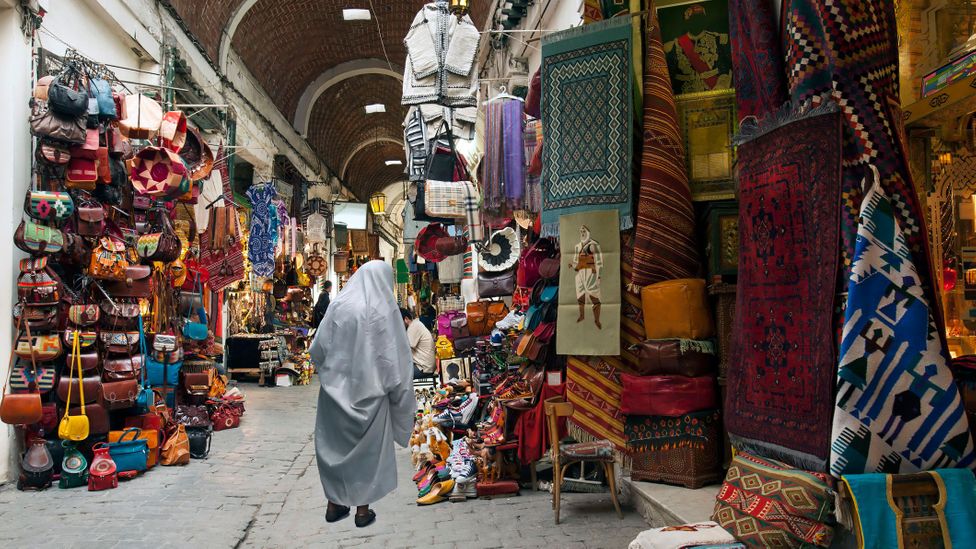
Demonym(s)
Tunisians
Government
Unitary presidential republic
President
Kais Saied
Prime minister
Najla Bouden
House speaker
Ibrahim Bouderbala
Legislature
Assembly of the representatives of the people
Area
163,610km (63,170 sq mi)
Water: 5.04
Population
11,708,370, 71.65/km (185.6/ sq mi)
Currency
Tunisian dinar (TND)
Driving side
Right
Calling code
+216
Iso 3166 code
TN
Internet TID
tn
Establishment
• Ancient Carthage 814 BC
• Africa Proconsularis 146 BC
• Vandal Kingdom 435
• Exarchate of Africa 591
• Aghlabids 800
• Fatimids 909
• Zirids 972
• Hafsids 1207
• Husainids 15 July 1705
• Kingdom 20 March 1956
• Republic 25 July 1957
• Current Constitution 28 August 2022
Countries And Territories
Through the 18th and 19th centuries, English sources often referred to the region as the Barbary Coast or the Barbary States, a term derived from the demonym of the Berbers. Sometimes, the region is referred to as the Land of the Atlas, referring to its Atlas Mountains.
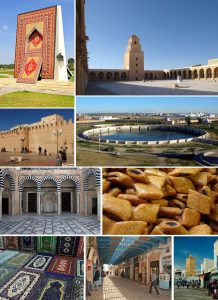
The Maghreb is usually defined as encompassing much of the northern part of Africa, including a large portion of the Sahara Desert, but excluding Egypt and Sudan, which are considered to be located in the Mashriq the eastern part of the Arab world. The traditional definition of the Maghreb which restricted its scope to the Atlas Mountains and the coastal plains of Morocco, Algeria, Tunisia and Libya was expanded in modern times to include Mauritania and the disputed territory of
Western Sahara. During the era of Al-Andalus on the Iberian Peninsula (711–1492), the Maghreb’s inhabitants the Muslim Berbers, or Maghrebi were known by Europeans as the “Moors”.
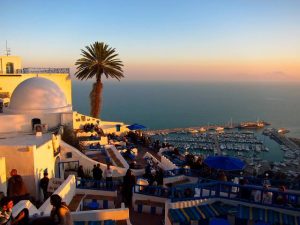
Before the establishment of modern nation states in the region during the 20th century, the Maghreb most commonly referred to a smaller area, between the Mediterranean Sea and the Atlas Mountains in the south. It often also included the territory of eastern Libya, but not modern Mauritania.
As recently as the late 19th century, the term “Maghreb” was used to refer to the western Mediterranean region of coastal North Africa in general, and to Algeria, Morocco, and Tunisia in particular.
Background
Beginning in early antiquity, Tunisia was inhabited by the indigenous Berbers. Phoenicians began to arrive in the 12th century BC, establishing several settlements, of which Carthage emerged as the most powerful by the 7th century BC. Carthage was a major mercantile empire and a military rival to the Roman Republic until 146 BC, when it was defeated by the Romans who occupied Tunisia for most of the next 800 years. The Romans introduced Christianity and left architectural legacies like the Amphitheatre of El Jem.
In the 7th century AD, Arab Muslims conquered all of Tunisia (finally succeeding in 697 after several attempts starting in 647) and settled with their tribes and families, brought Islam and Arab culture to the local inhabitants, and since then Arabs became the majority of the population.
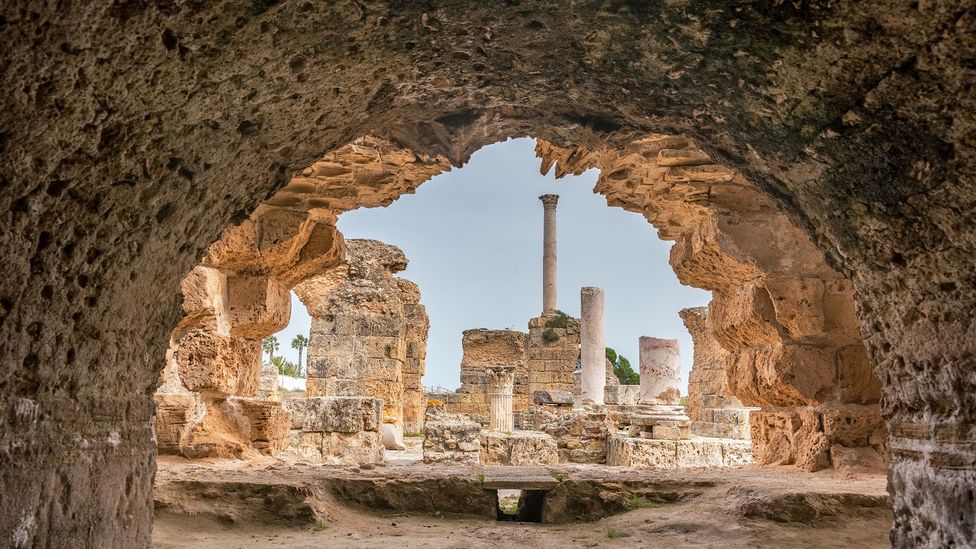
Then, in 1546, the Ottoman Empire established control there, holding sway for over 300 years, until 1881, when the French conquered Tunisia. In 1956, Tunisia gained independence as the Tunisian Republic under the leadership of Habib Bourguiba with the help of activists such as Chedly Kallala, Farhat Hached and Salah ben Youssef.
Today, Tunisia’s culture and identity are rooted in this centuries-long intersection of different cultures and ethnicities.
In 2011, the Tunisian Revolution, which was triggered by dissatisfaction with the lack of freedom and democracy under the 24-year rule of President Zine El Abidine Ben Ali, overthrew his regime and catalyzed the broader Arab Spring movement across the region.

Free multiparty parliamentary elections were held shortly thereafter; the country again voted for parliament on 26 October 2014, and for president on 23 November 2014. After the 2022 constitutional referendum, Tunisia became a unitary presidential representative democratic republic. From 2014 to 2020, it was considered the only democratic state in the Arab world, according to the Economist Intelligence Unit’s Democracy Index, and was rated a hybrid regime in the 2021 Index.
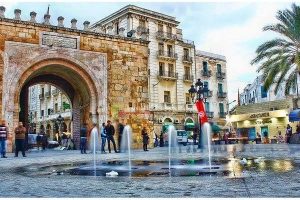
It is one of the few countries in Africa ranking high in the Human Development Index, with one of the highest per capita incomes on the continent, ranking 129th in GDP per capita income.
The official language of Tunisia is Modern Standard Arabic. The vast majority of Tunisia’s population is Arab and Muslim. Vernacular Tunisian Arabic is the most spoken, and French also serves as an administrative and educational language in some contexts, but it has no official status.
Tunisia is well integrated into the international community. It is a member of the United Nations, Organisation internationale de la Francophonie, the Arab League, the Organisation of Islamic Cooperation, the African Union, the Common Market for Eastern and Southern Africa, the Non-Aligned Movement, the International Criminal Court, and the Group of 77, among others.

It maintains close economic and political relations with some European countries, particularly with France,] and Italy, due to their geographical proximity. Tunisia also has an association agreement with the European Union and has attained the status of a major non-NATO ally of the United States.
Between the 9th and 11th centuries AD, Kairouan functioned as one of the great centers of Islamic civilization and gained a reputation as a hotbed of scholarship across the entire Maghreb. During this period, the Great Mosque of Kairouan became both a place of prayer and a center for teaching Islamic sciences under the Maliki current. A unique religious tradition practiced in Kairouan was the use of Islamic law to enforce monogamy by stipulating it in the marriage contract. Local tradition holds that seven pilgrimages to the Great Mosque equals one pilgrimage to Mecca. According to some, this makes Kairouan the fourth holiest city in Islam after Mecca, Medina and up Jerusalem.
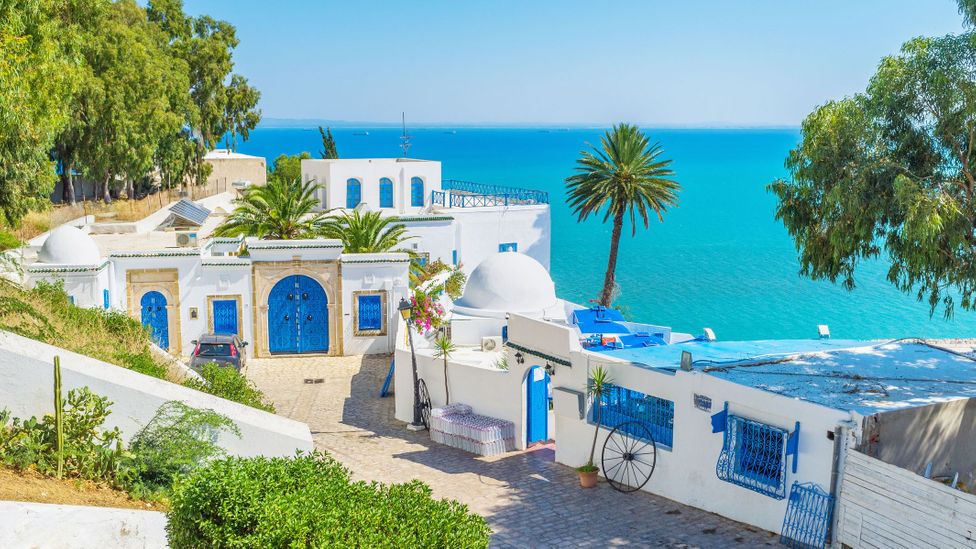
Struggle for independence (1943-1956)
After the liberation of Tunisia from the Germans, the French regained control over the government and made participation in a nationalist party illegal once more. Moncef Bey, who was popular amongst Tunisians, was deposed by the French.The French claimed that his removal was due to him being sympathetic to the Axis countries during German occupation, but the real reason is up for debate.
In 1945 after escaping French surveillance, Tunisian nationalist Habib Bourguiba arrived in Cairo. While there, he was able to make contact with the Arab League. Later in 1946, after traveling to other Middle Eastern countries, he made his way to the United States to speak to both the United Nations at their headquarters at Lake Success and U.S. State Department officials in Washington D.C., pleading the case of the nationalists.
As part of postwar Tunisia, a new all-Tunisian labor organization was formed, the Union Générale des Travailleurs (UGTT). This was one of the stronger components of the nationalist group Neo-Destour.
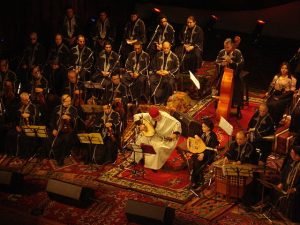
in Tunis Theatre
Habib Bourguiba made his way to the United States on 13 September 1949. He attended the American Federation of Labor meeting in San Francisco, California. The French were opposed to his presence there, and the US feared political change in North Africa due to the looming presence of possible Soviet Union communist expansion.
Bourguiba continued to plead to foreign leaders when he traveled to Italy on 6 November 1951. His contacts included Alberto Mellini Ponce De León, Mario Toscano, and Licinio Vestri.[64] De León was an old friend of Bourguiba who had helped free him from German captivity, Toscano was the head of the Ufficio Studi e Documentazione in the Ministry of Foreign Affairs, and Vestri was an Africanist scholar.
Despite his best efforts, the Italians remained neutral as they did not want to ruin relations with NATO ally France, nor did they want to hamper any possibility of future relations with Tunisia as it served as a key part of the Mediterranean.
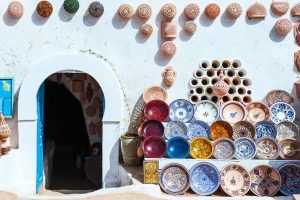
The French Resident General in Tunisia, Jean de Hautecloque left Tunis to go to Paris on August 25, 1953, when he was replaced by Pierre Voizard. Voizard had previously been the French Minister to Monaco. A month after his arrival in Tunis on 26 September 1953, He made many changes to ease tensions in Tunisia. He lifted press censorship and freed several political prisoners. He also restored the full powers of civil authorities and raised the state of siege in the Sahel.
On 26 January 1954, Voizard announced that there would soon be new reforms in favor of granting more sovereignty to Tunisians while insuring the interests of the French and French citizens in Tunisia, at the Cercle Republicain d’outre Mer in Paris. The Neo-Destour group was not in favor of these reforms if they themselves were not involved in their creation. They also demanded the freedom of leader Bourguiba from where he was imprisoned on the Isle of Galete.
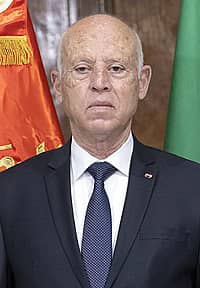
The first democratically elected president Beji Caid Essebsi died in July 2019. Following him, Kais Saied became Tunisia’s president after a landslide victory in the 2019 Tunisian presidential elections in October. On 23 October 2019, Kais Saied was sworn in as Tunisia’s new President.
Culture
The culture of Tunisia is mixed due to its long established history of outside influence from people such as Phoenicians, Romans, Vandals, Byzantines, Arabs, Siculo-Normans, Turks, Italians, Maltese and the French who all left their mark on the country. But the indelible culture is painting, singing, festival and literature.
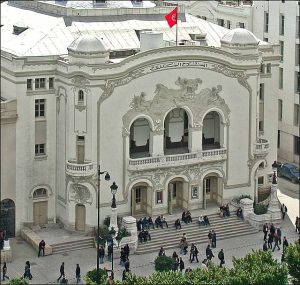
Tunisians enjoy celebrating hundreds of international film, theatre, and music festivals, nationally, regionally, and locally. The country is famous for beautiful pottery, ironwork, and mosaics.
Economy
Ranked the most competitive economy in Africa by the World Economic Forum in 2009, Tunisia is an export-oriented country in the process of liberalizing and privatizing with an economy averaging 5% GDP growth since the early 1990s. The agricultural sector accounts for 11.6% of the GDP, industry 25.7%, and services 62.8%. The industrial sector is mainly made up of clothing and footwear manufacturing, production of car parts, and electric machinery. Although Tunisia managed an average 5% growth over the last decade, it continues to suffer from a high unemployment rate, especially among youth
Tourism and Attraction
Sidi Bou Said
Dougga
Kairouan
Djerba Island




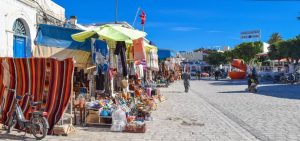
Tozeur
Among Tunisia’s tourist attractions are its cosmopolitan capital city of Tunis, the ancient ruins of Carthage, the Muslim and Jewish quarters of Djerba, coastal resorts outside of Monastir, and the night life-driven city of Hammamet. According to The New York Times, Tunisia is “known for its golden beaches, sunny weather and affordable luxuries”.
Amphitheater of El Jem
Tunis
Djerbahood
Sousse
Cuisine
Tunisian cuisine is influenced by the Mediterranean cuisine. The most popular dish in Tunisia is couscous, made of specially prepared semolina grains steamed and served with meat and vegetables. Tunisian diet includes a healthy dose of fresh seasonal vegetables and fruits, freshly baked bread, dairy products, olive oil, seafood (a wide range of fish) and meat (usually poultry) and can be quite spicy.
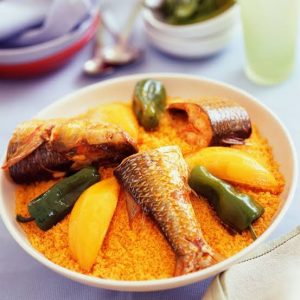
Couscous is the centerpiece of traditional Tunisian cuisine. This staple food, which is derived from semolina, is popular across Northern African and is present on nearly every dinner table in Tunisia.
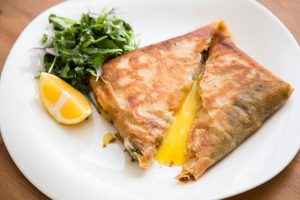
Briks are a staple delight across Tunisia and can be found in little shops throughout the country. Similar to a samosa, a brik is made from wrapping delicate pastry dough around a variety of filling options, including potatoes, eggs, or tuna. The flavorful packets are then fried to golden perfection in grapeseed oil. These tasty, triangle-shaped finger foods are best served piping hot with a squeeze of fresh lemon juice.
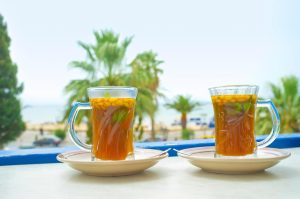
The melding of many cultures and flavors is apparent in Tunisia’s most popular drink, mint tea. Served hot or over ice, the unique flavors of this fresh beverage are accentuated by the presence of pine nuts floating on top. The crunchy nuts provide a surprising twist of flavor and texture, especially for those not accustomed to earthy notes in a sweet tea.
Sources
• al-Ḥabīb Bū-Laʿrās · ( 2017) The Most Important Dates from Prehistory to the Revolution. Cérès Editions: Tunis.
•https://en.m.wikipedia.org/wiki/History_of_Tunisia
• https://localhistories.org/a-brief-history-of-tunisia/.
•https://www.britannica.com/event/Jasmine-Revolution
•https://www.smithsonianmag.com/sponsored/10-tunisian-wines-and-dishes-you-should-know-180960229/
• Lloyd Cabot Briggs. (1960) Tribes of the Sahara. Harvard Univ. & Oxford Univ. pp. 38–40
• Winterer Caroline (2010). “Model Empire, Lost City: Ancient Carthage and the Science of Politics in Revolutionary America”.
Written by: Usani Wofai Eta(wofaiusani05@gmail.com)
